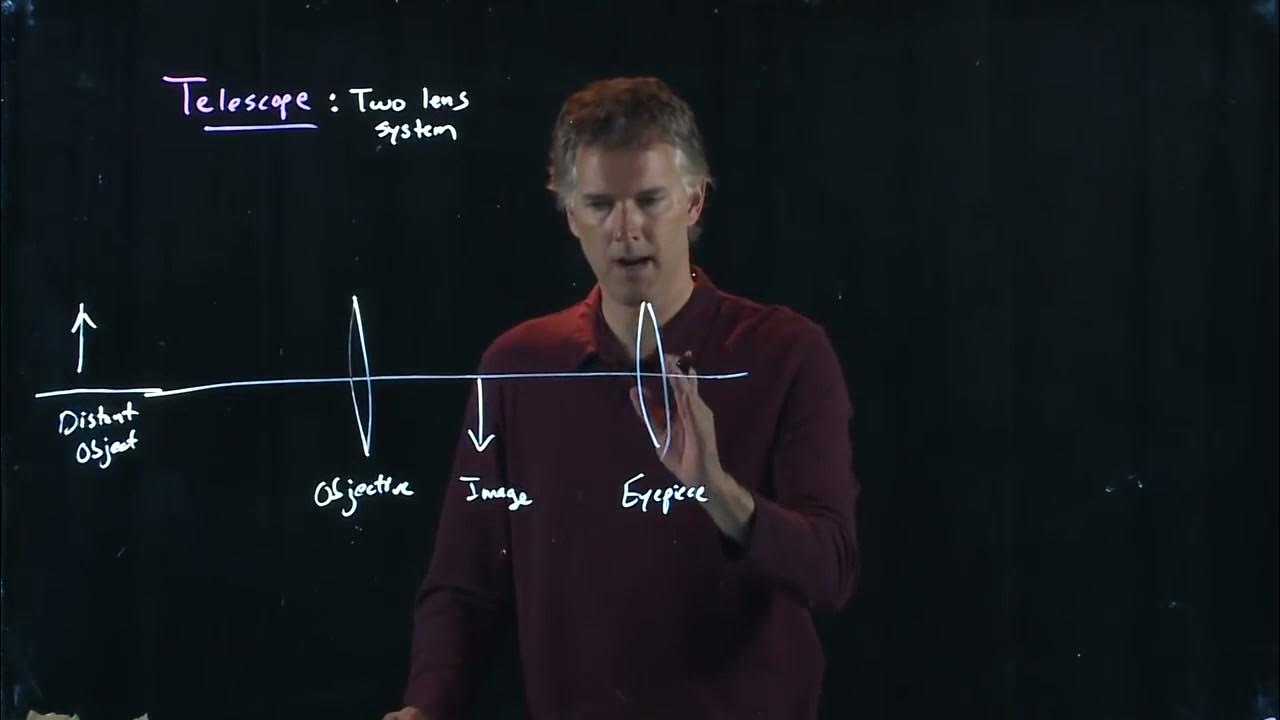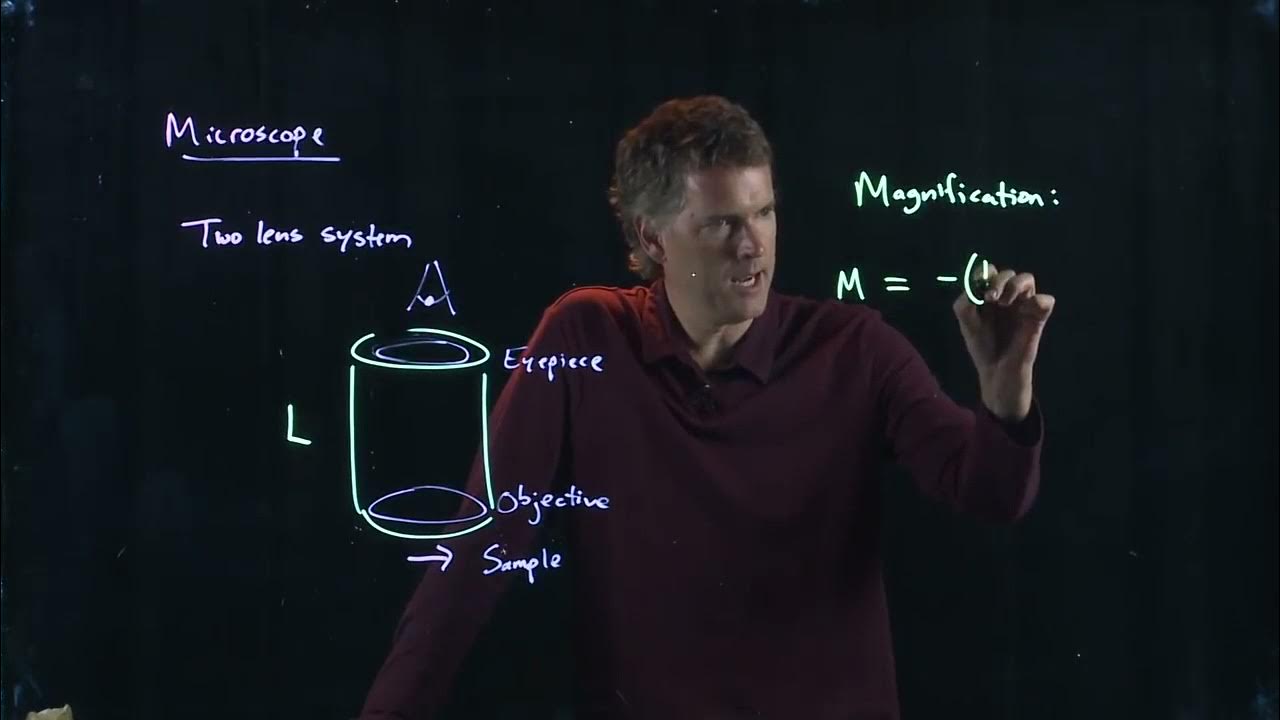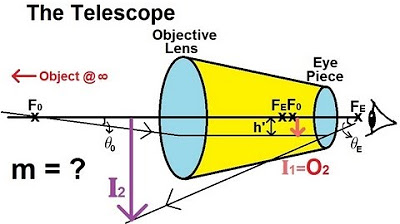How to Make a Telescope - 8 Inch Newtonian Reflector (Part 1)
TLDRIn this video, Will from Stormthecastle.com, also known as Epic Fantasy on YouTube, demonstrates how to build a Newtonian reflector telescope. He covers the essential components, including the primary and secondary mirrors, eyepiece, and optical tube assembly. Using a cardboard tube reinforced with fiberglass, he guides viewers through measuring the focal length, constructing the tube, and mounting the mirrors. Will also explains the importance of collimation for optimal performance. This detailed tutorial is part one of a series, with part two focusing on building the telescope mount. Will's enthusiasm for astronomy and hands-on projects shines throughout the video.
Takeaways
- 🌌 The video is a tutorial on how to make a reflector telescope by Will from Stormthecastle.com, known as Epic on YouTube.
- 🔭 The tutorial covers the creation of an optical tube assembly in part one, with the stand for the telescope to be made in part two.
- 🛠️ The main components of a reflector telescope are the primary mirror, secondary mirror, eyepiece, and a structure to hold them together.
- 📏 The primary mirror is parabolic in shape, which is essential for focusing light, and is larger than the viewer's eye to gather more light.
- 📏 The focal length of the mirror is determined by using a light bulb and a sheet of paper to find the distance where the light focuses.
- 🏗️ The optical tube is made from a 10-inch Quikrete tube, which is fiberglassed for strength and painted black on the inside to reduce reflections.
- 🔩 The mirror mount is adjustable with spring-loaded screws to ensure the optics are perfectly aligned, which is crucial for collimation.
- 🔨 The secondary mirror is made using threaded rods, nuts, and a wooden dowel cut at a 45-degree angle to direct light to the eyepiece.
- 👷♂️ Safety is emphasized during the construction process, especially when working with materials like fiberglass.
- 🎨 The exterior of the telescope tube can be painted any color, with red being a popular choice for astronomers as it doesn't affect night vision.
- 🔍 The final step involves collimating the telescope by adjusting the mirrors to ensure the light paths are correctly aligned for optimal viewing.
Q & A
Who is the presenter of the tutorial?
-The presenter of the tutorial is Will from stormthecastle.com, known as Epic on YouTube.
What is the main subject of the tutorial?
-The main subject of the tutorial is how to make a reflector telescope.
What are the four major components of a reflector telescope mentioned in the script?
-The four major components of a reflector telescope are the main mirror, the secondary mirror, the focus or eyepiece, and a structure to hold everything together.
What is the purpose of the secondary mirror in a telescope?
-The secondary mirror redirects the light that has been reflected off the primary mirror to the eyepiece, allowing the observer to view the image.
What type of tube is used for the optical tube assembly in the tutorial?
-A 10-inch Quikrete tube, typically used for concrete forming, is used for the optical tube assembly.
Why is the shape of the main mirror in a telescope important?
-The shape of the main mirror is a parabola, which is important because it changes the direction of the light and brings it to a focus, allowing for the collection of more light and a clearer image.
How is the focal length of the mirror determined in the tutorial?
-The focal length is determined by using a light bulb, a piece of cardboard, and the mirror to create a focused image of the bulb on the cardboard, which is then measured to find the focal length.
What material is used to strengthen the cardboard tube in the tutorial?
-Fiberglass is used to strengthen the cardboard tube by applying it with resin.
What is the purpose of painting the inside of the tube flat black in the tutorial?
-Painting the inside of the tube flat black helps reduce reflection and distortion, which is beneficial for observing starlight.
What is the collimation process in the context of the tutorial?
-Collimation is the process of adjusting the alignment of the mirrors in the telescope to ensure that the light is correctly focused and the image is clear.
What is the significance of the 45-degree angle cut on the wooden dowel for the secondary mirror?
-The 45-degree angle cut on the wooden dowel is used to ensure that the light bounces off the secondary mirror at a 90-degree angle into the eyepiece, which is crucial for the correct projection of the image.
What safety precautions are recommended when working with fiberglass in the tutorial?
-The tutorial recommends wearing a respirator when working with fiberglass, both during the mixing and sanding processes, to ensure safety.
What is the purpose of the wing nuts in the mirror mount assembly?
-The wing nuts are used to adjust the position of the mirror in any direction, allowing for precise alignment during the collimation process.
What type of bolts are used for the mirror mount and why?
-Flathead brass bolts are used for the mirror mount to prevent rust and to allow the bolts to sit flush with the mount for proper alignment and adjustment.
What is the next step after building the optical tube assembly and the mirror mounts?
-The next step, as mentioned in the script, is to build the mount for the telescope in part two of the tutorial.
Outlines
🌌 Introduction to Telescope Making Tutorial
This paragraph introduces the tutorial on making a reflector telescope by Will from Stormthecastle.com, known as Epic Fantasy on YouTube. The presenter expresses his passion for astronomy and telescopes, highlighting the project's educational value. The main components of a reflector telescope are outlined: the primary mirror, secondary mirror, focus or eyepiece, and the structure to hold them. The tutorial will be split into two parts, with part one focusing on the optical tube assembly and part two on the stand construction. The script mentions the use of a cardboard tube and fiberglass for the tube's construction, emphasizing the importance of the primary mirror's parabolic shape for light collection and focusing.
🛠️ Constructing the Optical Tube Assembly
The second paragraph delves into the construction of the telescope's optical tube assembly. The presenter explains the process of measuring the focal length of the primary mirror using a light bulb and a piece of cardboard, which is crucial for aligning the telescope's components correctly. The chosen material for the tube is a 10-inch quikrete tube, which is fiberglassed for strength. Safety precautions, such as wearing a respirator, are emphasized during the fiberglassing process. The tube is painted black on the inside to reduce reflections and any color on the outside, with white or red being recommended for astronomers. The focuser's mounting is also discussed, with the presenter advising to paint before final assembly.
🔨 Building the Mirror Mount for Precision Alignment
In this paragraph, the presenter describes the process of building the mirror mount, which is essential for aligning the optics of the telescope. Two discs of plywood are cut to fit the tube and to support the mirror. Brass bolts, washers, nuts, springs, and wing nuts are used to create an adjustable mount. The mount allows for the primary mirror to be tilted and adjusted in any direction for optimal alignment. The presenter also details the use of counter-sunk bolts and steel latches with soft velcro to secure the mirror without scratching it. The complexity of the mirror mount assembly is highlighted as a challenging but rewarding part of the project.
🔄 Assembling the Secondary Mirror and Collimating the Telescope
The final paragraph covers the assembly of the secondary mirror and the collimation process, which ensures the light from the primary mirror reflects correctly into the eyepiece. The secondary mirror is made from a wooden dowel with a 45-degree angle cut and holes for threaded rods. The presenter uses five-minute epoxy to attach the secondary mirror to the dowel. Once the secondary mirror is in place, the collimation process is explained, which involves adjusting the primary and secondary mirrors to achieve perfect alignment. This is done by observing the reflection of the secondary mirror in the eyepiece and adjusting the wing nuts and threaded rods until the image is centered. The paragraph concludes with the satisfaction of having built an 8-inch Newtonian reflector telescope and a teaser for part two, which will focus on building the mount.
Mindmap
Keywords
💡Telescope
💡Optical Tube Assembly
💡Primary Mirror
💡Secondary Mirror
💡Focal Point
💡Focal Length
💡Fiberglass
💡Collimation
💡Eyepiece
💡Newtonian Reflector
💡Mount
Highlights
Introduction of the tutorial on making a telescope by Will from stormthecastle.com, known as Epic Fantasy on YouTube.
Explanation of the passion for telescopes and astronomy, emphasizing the beauty of a starry sky.
Description of the main components of a reflector telescope: the main and secondary mirrors, the focus or eyepiece, and the structure.
Use of a cardboard tube and fiberglass for the optical tube assembly to ensure strength.
The importance of the parabola shape of the main mirror for focusing light.
Demonstration of how to measure the focal length of the mirror using a light bulb and a piece of paper.
Calculation of the necessary distance for the eyepiece based on the focal length.
Instructions on cutting and fiberglassing the tube for the telescope, emphasizing safety precautions.
The process of painting the inside of the tube black to reduce reflections and the outside in a color of choice.
Construction of the mirror mount with spring-loaded screws for easy adjustment.
Details on the materials and tools needed for building the telescope, including plywood, bolts, washers, nuts, and springs.
Assembly of the mirror mount with careful attention to the alignment and adjustment mechanisms.
Creation of the secondary mirror mount using threaded rods, nuts, and a wooden dowel.
Gluing the secondary mirror onto the dowel with a 45-degree angle for proper light reflection.
Explanation of the collimation process to align the mirrors correctly for optimal viewing.
Final assembly and adjustment of the telescope, including the placement of the mirrors and the focuser.
Announcement of part two of the tutorial, which will cover the creation of the telescope mount.
Encouragement for viewers to subscribe for more creative and educational projects.
Transcripts
Browse More Related Video
5.0 / 5 (0 votes)
Thanks for rating:





